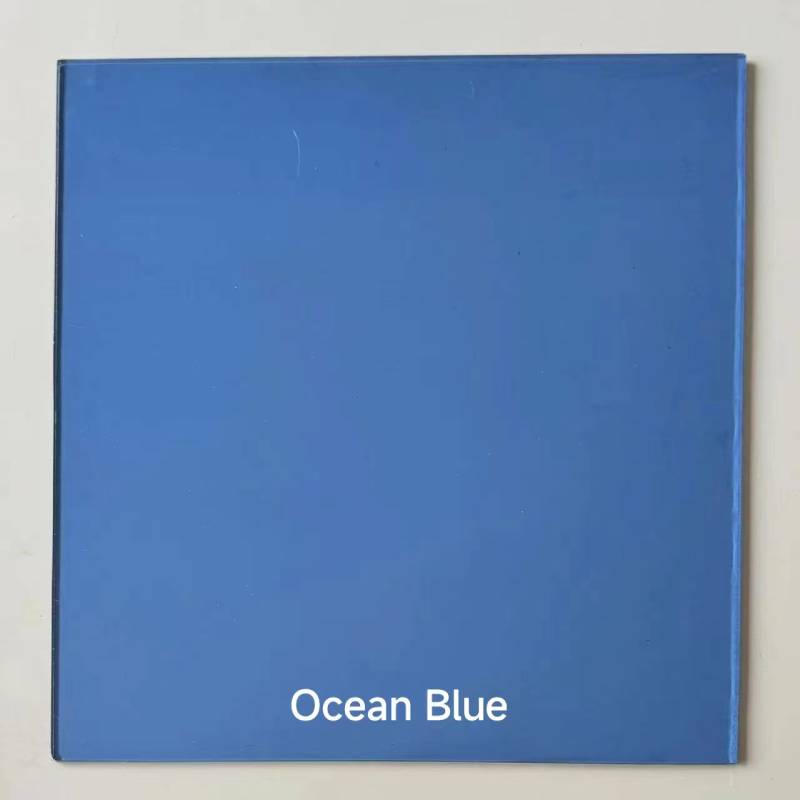The Enchanting World Behind Reflective Float Glass
Reflective float glass, a term that may seem mundane to the uninitiated, carries with it an air of mystery and elegance. This type of glass is created through a process called the float process, where molten glass is 'floated' on a bed of molten metal, typically tin, to achieve a smooth and even surface. The reflective property comes from coatings applied to its surface, which can range from simple metallic films to more complex, multi-layered optical interference stacks.
Imagine walking into a room where the walls are made of reflective float glass. As you approach, your reflection greets you, warped and twisted in a mesmerizing dance of light and shadow. The glass does not merely act as a transparent barrier but becomes a canvas for the interplay of light and imagery. It transforms the mundane into the extraordinary, giving us a glimpse into an alternate reality where the lines between substance and reflection blur.
In modern architecture, reflective float glass is used to create stunning visual effects and control the amount of natural light that enters a space. Skyscrapers clad in this material shimmer like mirrored pillars, their surfaces reflecting the ever-changing canvas of the sky. By day, they echo the blues and whites of the clouds; by night, they emulate the city’s illuminated grid, a pulsating heart of artificial light.
Yet, beyond aesthetics, reflective float glass serves a practical purpose
Yet, beyond aesthetics, reflective float glass serves a practical purpose

Yet, beyond aesthetics, reflective float glass serves a practical purpose
Yet, beyond aesthetics, reflective float glass serves a practical purpose
 reflective float glass
reflective float glass. Its ability to reflect sunlight can help reduce cooling loads in buildings, thereby cutting energy costs. In vehicles, it can be fashioned into rearview mirrors, enhancing safety by dimming the high beams of following cars. Even in jewelry crafting, the reflective quality adds a touch of luster and brilliance to the wearable art.
The properties of reflective float glass also pose challenges. Its very effectiveness in reflection can sometimes lead to glare, which if not properly managed, can cause visual discomfort or hazards. Urban planners and architects must strike a balance, using it thoughtfully to avoid the creation of 'mirror-like' environments that overwhelm with reflected light.
In conclusion, reflective float glass is much more than a mere building material. It is a substance that redefines our perception of space, light, and reflection. Through its unique blend of form and function, it encapsulates the essence of modern design—where utility meets beauty, and innovation casts a mirror to the future.


 Yet, beyond aesthetics, reflective float glass serves a practical purpose
Yet, beyond aesthetics, reflective float glass serves a practical purpose
Yet, beyond aesthetics, reflective float glass serves a practical purpose
Yet, beyond aesthetics, reflective float glass serves a practical purpose reflective float glass. Its ability to reflect sunlight can help reduce cooling loads in buildings, thereby cutting energy costs. In vehicles, it can be fashioned into rearview mirrors, enhancing safety by dimming the high beams of following cars. Even in jewelry crafting, the reflective quality adds a touch of luster and brilliance to the wearable art.
The properties of reflective float glass also pose challenges. Its very effectiveness in reflection can sometimes lead to glare, which if not properly managed, can cause visual discomfort or hazards. Urban planners and architects must strike a balance, using it thoughtfully to avoid the creation of 'mirror-like' environments that overwhelm with reflected light.
In conclusion, reflective float glass is much more than a mere building material. It is a substance that redefines our perception of space, light, and reflection. Through its unique blend of form and function, it encapsulates the essence of modern design—where utility meets beauty, and innovation casts a mirror to the future.
reflective float glass. Its ability to reflect sunlight can help reduce cooling loads in buildings, thereby cutting energy costs. In vehicles, it can be fashioned into rearview mirrors, enhancing safety by dimming the high beams of following cars. Even in jewelry crafting, the reflective quality adds a touch of luster and brilliance to the wearable art.
The properties of reflective float glass also pose challenges. Its very effectiveness in reflection can sometimes lead to glare, which if not properly managed, can cause visual discomfort or hazards. Urban planners and architects must strike a balance, using it thoughtfully to avoid the creation of 'mirror-like' environments that overwhelm with reflected light.
In conclusion, reflective float glass is much more than a mere building material. It is a substance that redefines our perception of space, light, and reflection. Through its unique blend of form and function, it encapsulates the essence of modern design—where utility meets beauty, and innovation casts a mirror to the future.